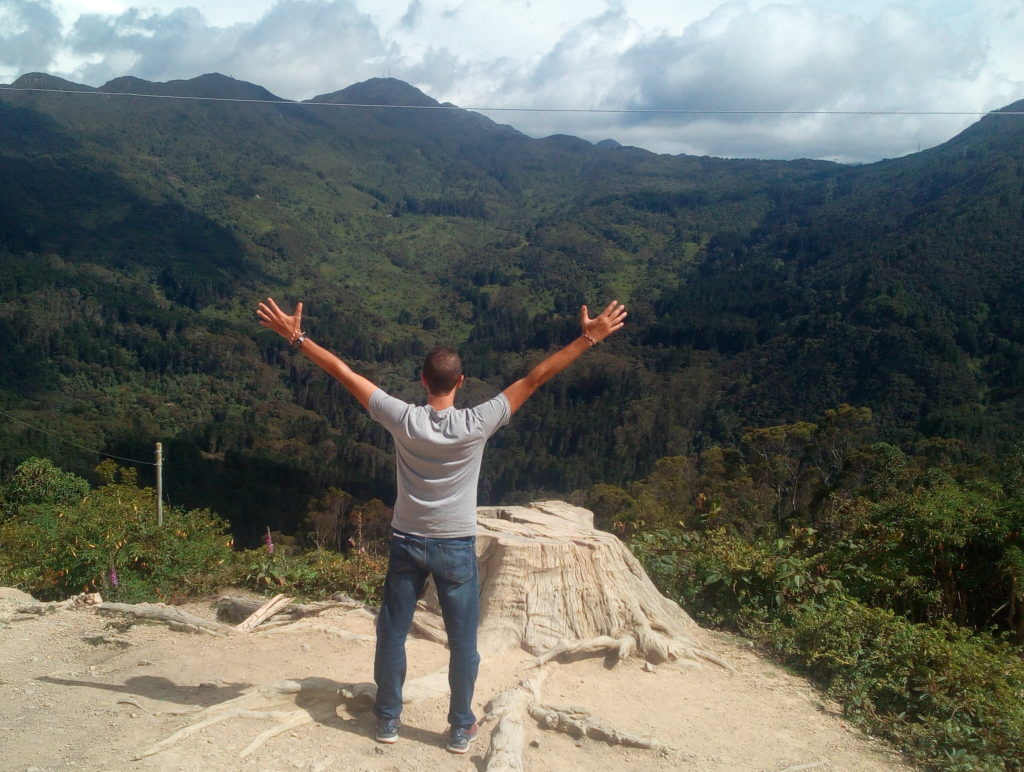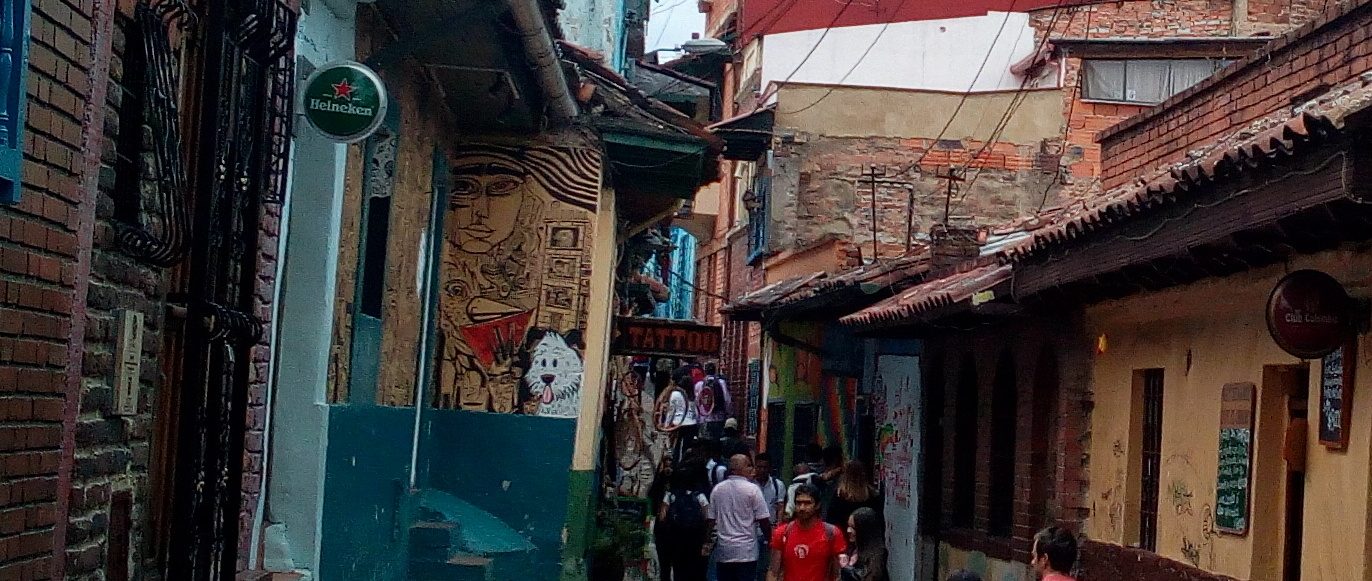My trip to Colombia ended in Bogotá. With its 8 million inhabitants, the Colombian capital is huge! Unfortunately, it lacks an adapted transportation network, but it is a city rich in history, with some interesting spots to visit.
I only stayed 4 days, during which I was incredibly well received by my friend Jeison (whom I haven’t seen for more than 4 years!).
What to do in Bogotá?
A free walking tour
To get familiarized with Bogotá, Colombia, and this area of Latin America, nothing better than a walking tour to dive into the history of the country and its capital, in its cultural and architectural heritage!
There is also a talk of the emerald trade, Colombia having the best emerald quality in the world!
We visited the main squares (including Plaza Chorro de Quevedo, where Bogotá have been founded and Plaza Bolivar), museums (including an entrance to the Museum Botero, a real national icon), while discovering the history of the country and the main historical events.
I did a 3 hours guided tour with the agency Beyond Colombia, and it was extremely interesting!
Gold Museum
With more than 34,000 golden objects (the largest collection in the world) and 85,000 articles in total, the Museo del Oro is a must in Bogotá.
The Banco de la Republica started buying items in 1.939 to avoid their degradation or loss.
The masterpiece, Balsa del Dorade is simply a marvel!
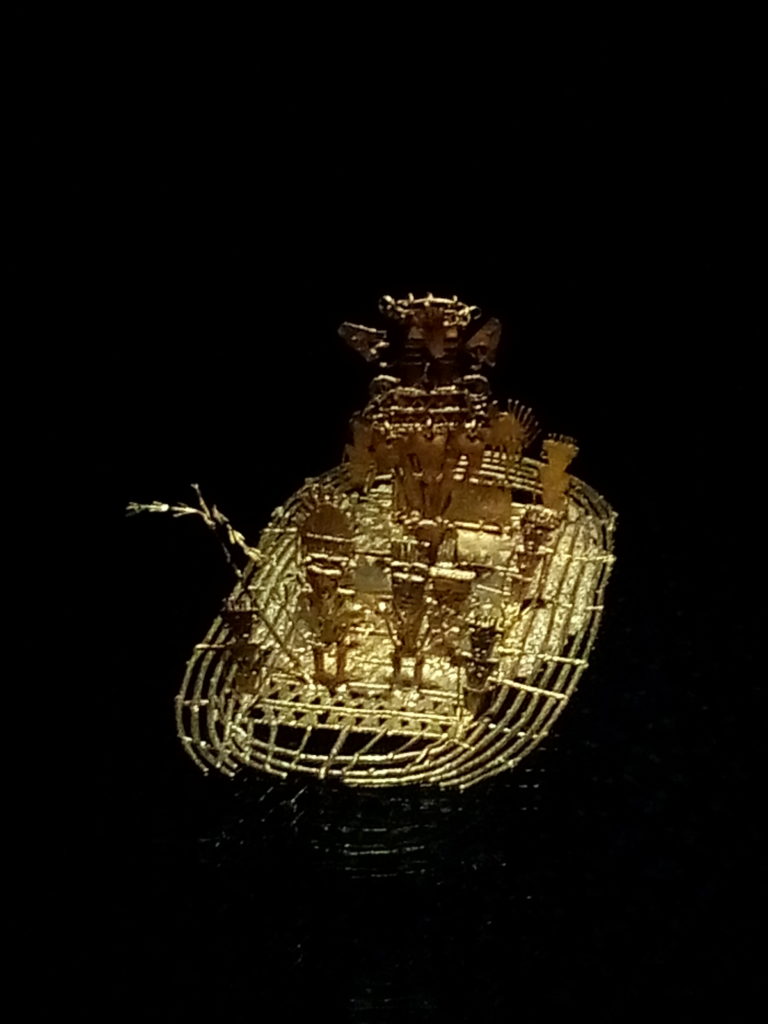
The Zipaquirá Cathedral
The Salt Cathedral of Zipaquirá is definitely my favorite spot!!

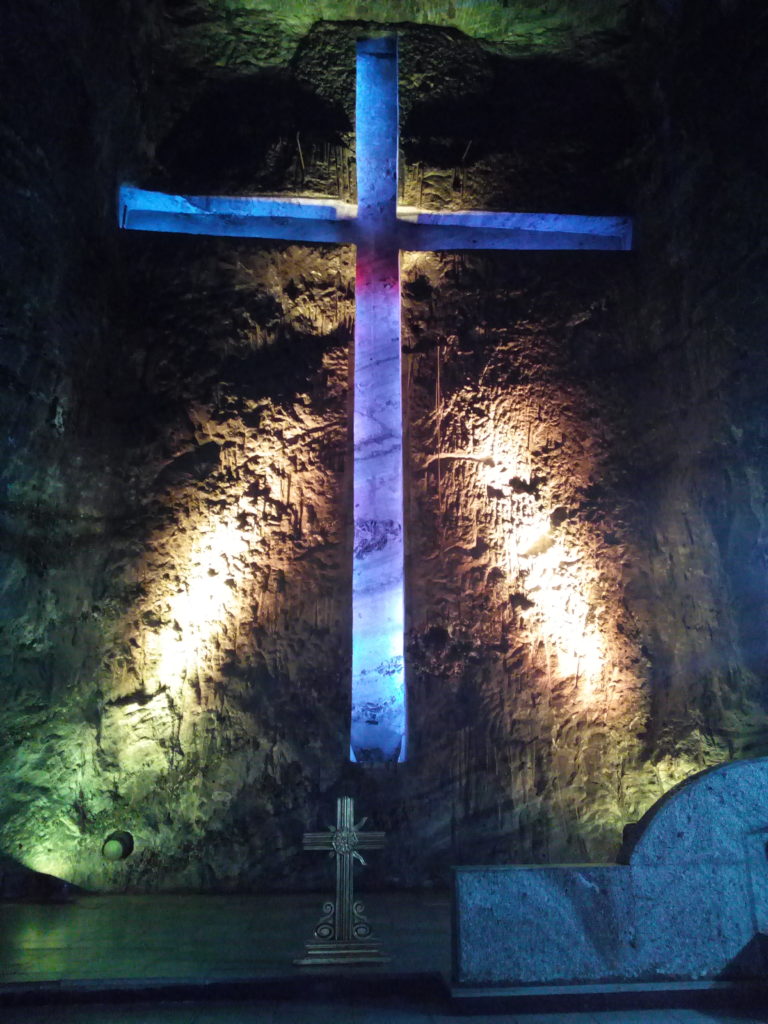
It is actually a cathedral erected in salt mines more than 150m deep!! The visit begins with a walk through the salt mine and relates the story of Jesus.
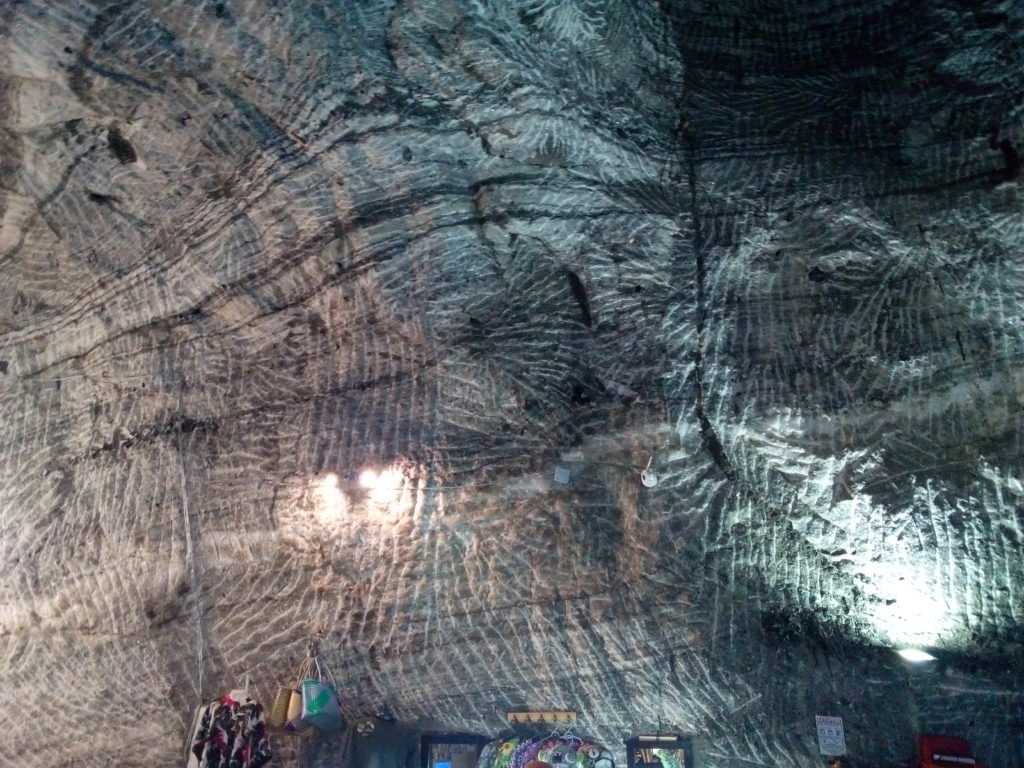
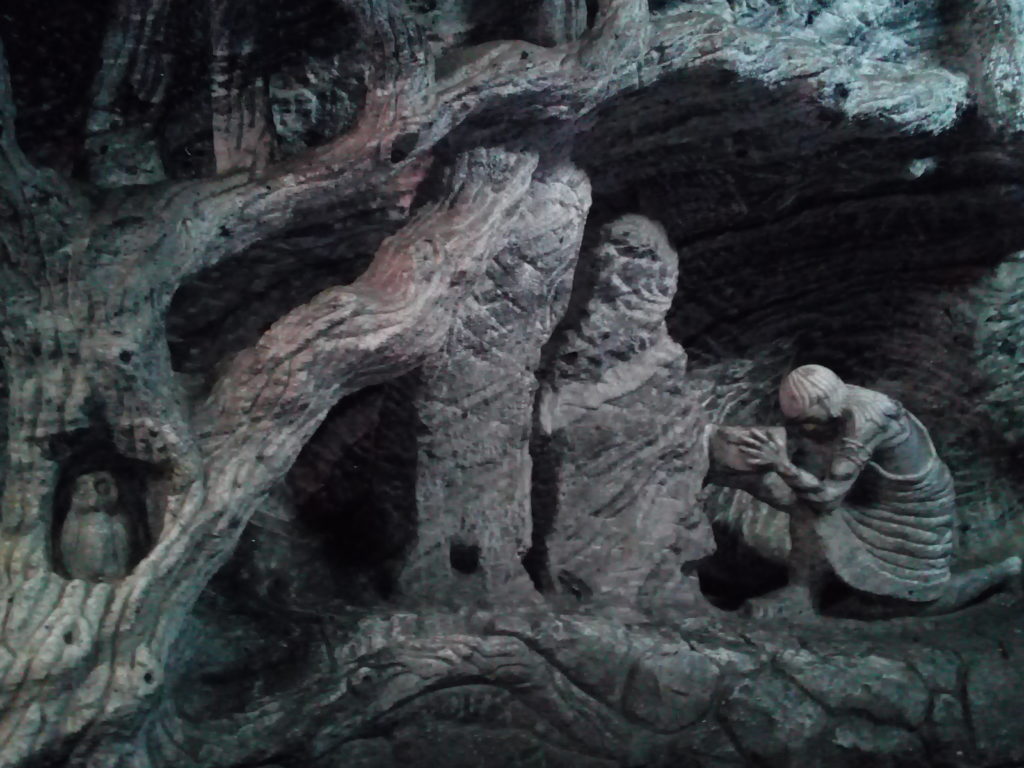
It is then possible to visit an impressive mirror of water and to walk in the village.
Climb the Cerro Monserrate
The Monserrate is one of the major attractions of the Colombian capital. Next to it is Cerro Guadalupe.
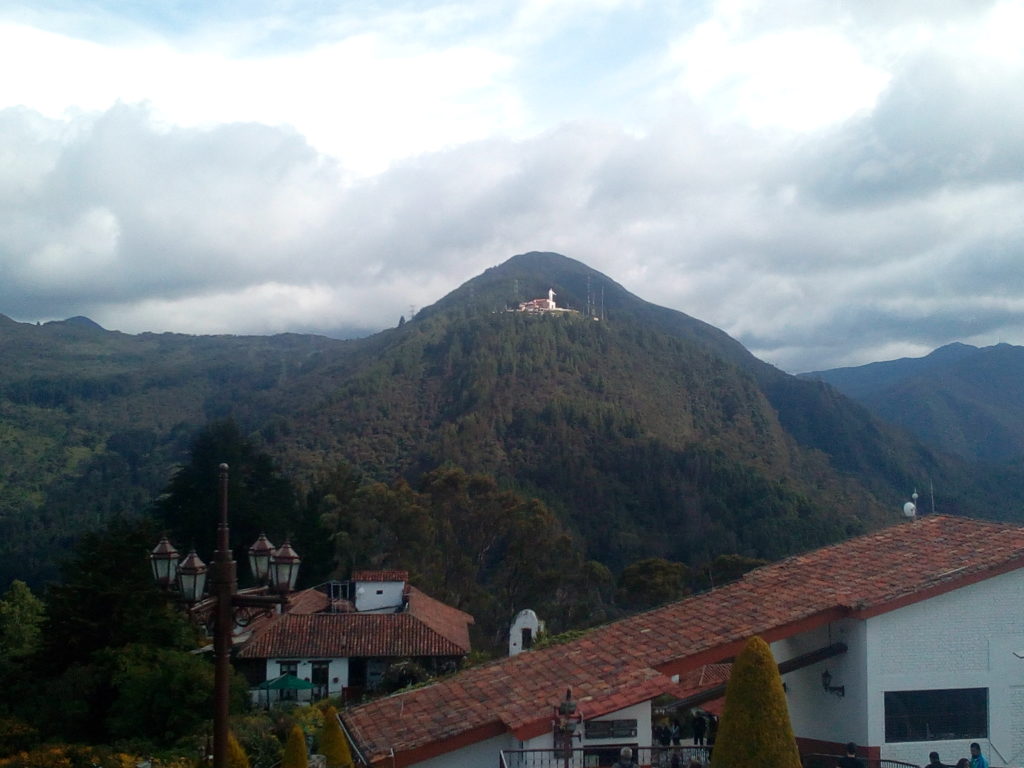
The Monserrate rises at 3152 m of altitude, or 500m above Bogotá, and allows having a panoramic view on a good part of the capital.
On the Monserrate stands the Basilica of Señor de Monserrate, some restaurants, from the fancy ones (the San Isidro) to the modest restaurants that we find in the markets. A small gallery with stalls of crafts and sale of sweets complete the decor.
The climb to the Monserrate as the descent can be done on foot, by funicular, or cable car. The details of these 3 ways are at the bottom of this article.
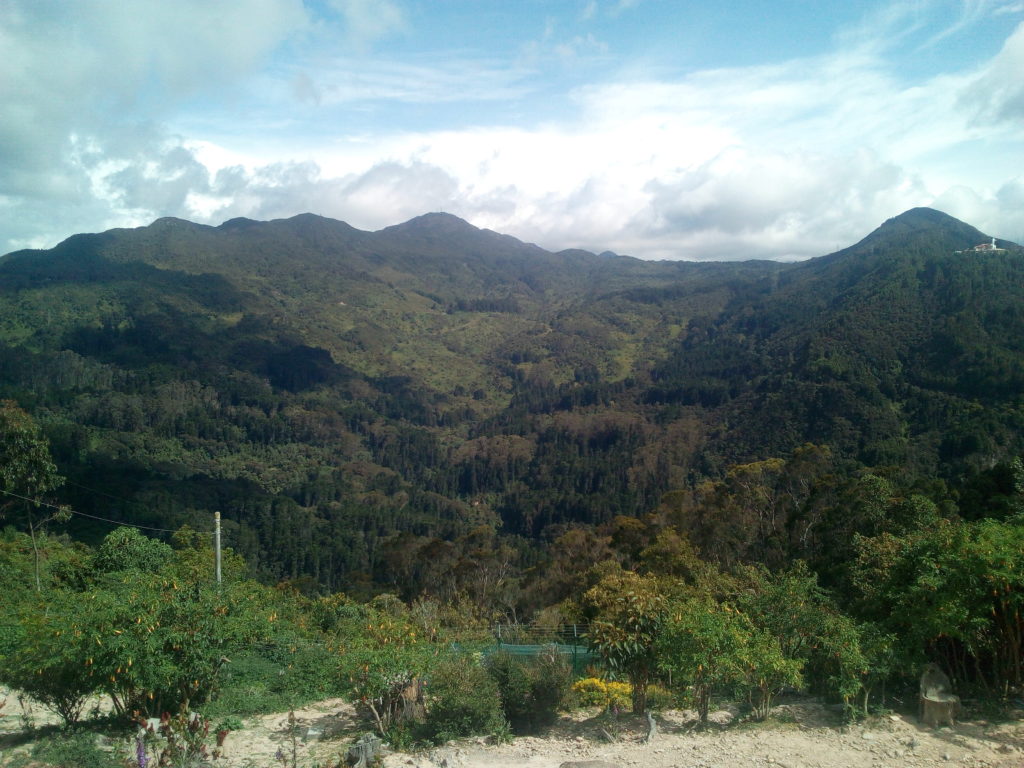
Eat an Ajiaco
Ajiaco is THE typical Bogotan dish. It is a chicken soup with 3 types of potatoes, corn, parsley, and cream of milk. It is usually served with rice (of course!) and avocado.
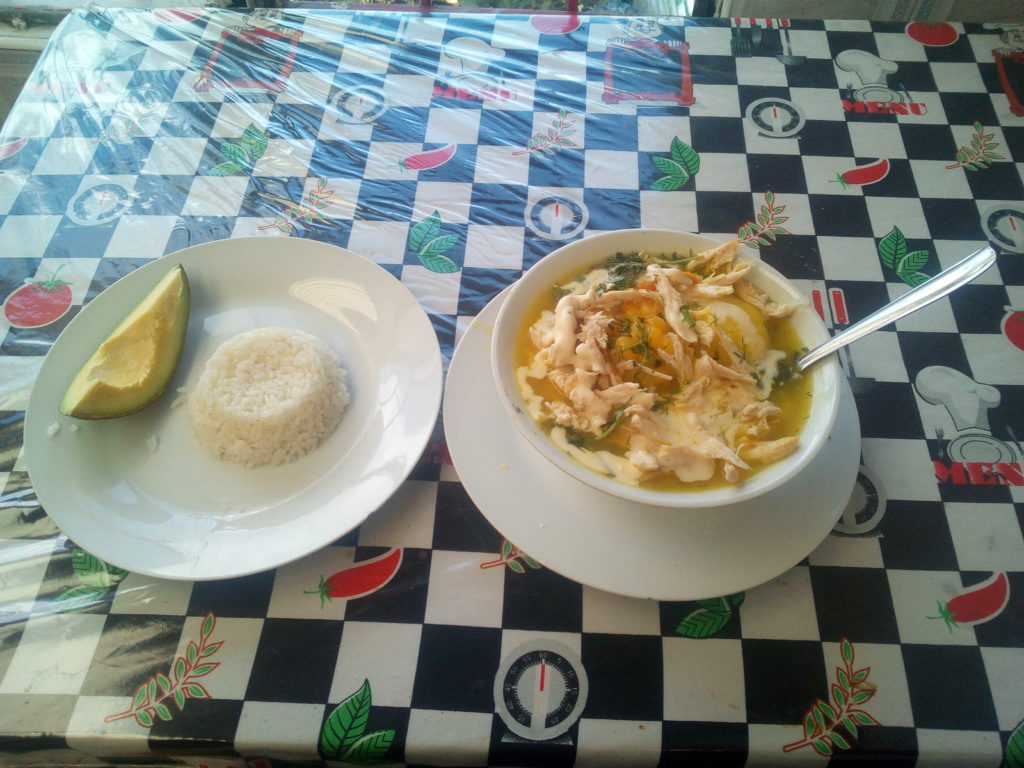
The Jaime Duque Park
I unfortunately did not have time to visit it, but it seems that Jaime Duque Park is super nice and big, we could spend a whole day there. Besides fauna and flora, it is home to several attractions, museums, lakes, slides, miradors …
For more information, visit the park’s website www.parquejaimeduque.com
About tips
Free walking tour
The free walking tour with Beyond Colombia starts at 10am in front of the museum of gold. There is a guide in English and another in Spanish.
At the end of the tour, the guide spoke of an “advised” tip of 30,000 pesos (9 €), but each person gives according to their appreciation and their budget!
Museo del oro
The entrance to the museum of gold costs 4,000 pesos (1,30 €) and it is possible to have an audioguide for 8,000 pesos. Otherwise, there are visits made by the museum guides that start every hour I think.
The museum is open until 7pm but access is possible until 6pm.
Monserrate
It is possible to climb the Monserrate on foot by funicular or cable car.
On foot, count 1h for the climb and 40 minutes for the descent
The funicular service ends at noon, the cable car remains accessible until 5pm. For both, the fare is 10,000 pesos (3 €) the single way. It is possible to pay in cash or by credit card.
Pura Vida!
